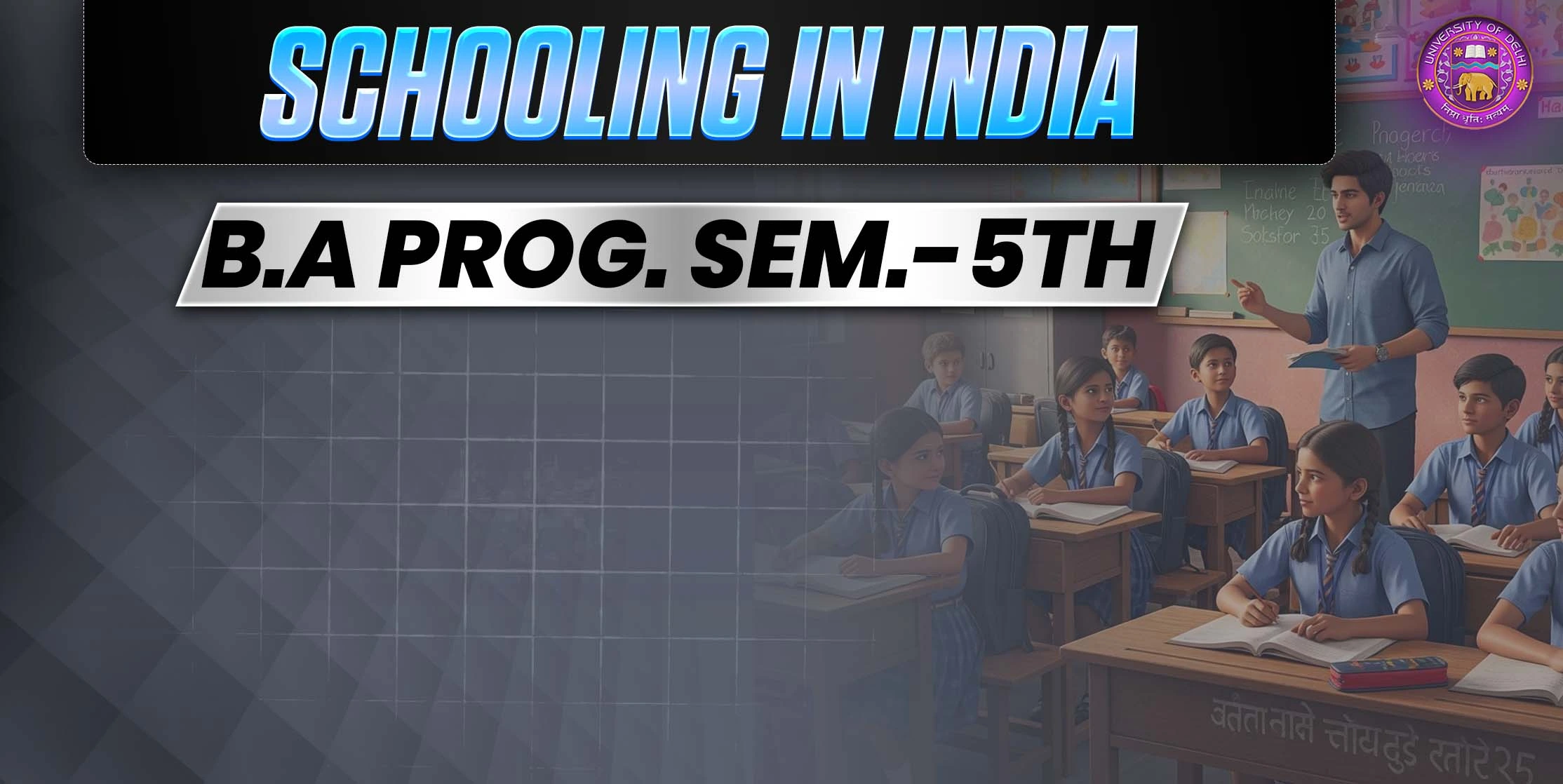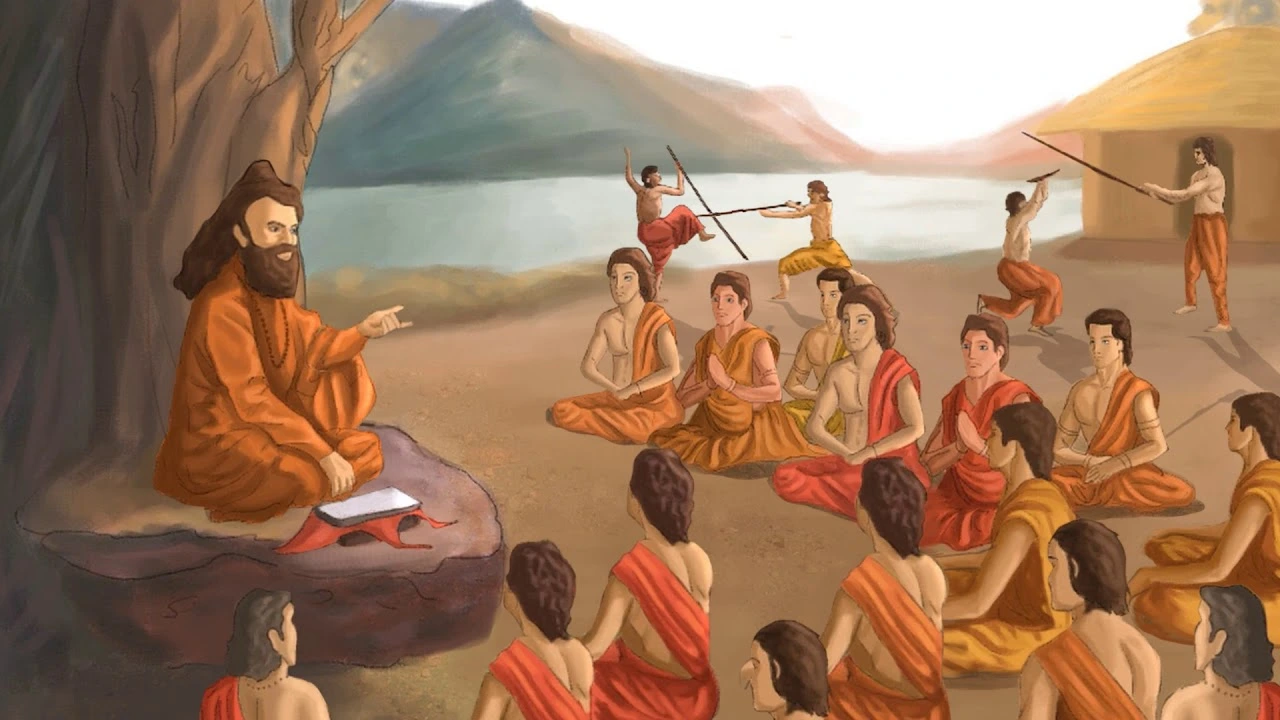
Get in Touch
We will get back to you within 24 hours.
Welcome to MVS Blog

Answer- Introduction
Vedic education was an important system of ancient India, which aimed at moral, social and spiritual development. Education and science in India were not pursued only for the sake of gaining knowledge, but it was considered a systematic effort to attain salvation by following the path of religion. Salvation was considered the highest goal of life. Education was considered an integral part of life during this period. The main basis of education was the Vedas, especially the Rig Veda.
Vedic period education of India

In ancient times, students used to sit with their Guru in the peace of nature, away from the turmoil and rebellion of this world, and listen, think and understand the problems of life. Their life was very simple and pure, life was a laboratory for them. They did not only acquire bookish knowledge, but also gained practical knowledge of the world and society by coming in contact with the masses.
Indians believed that truth should be experienced not only on a mental level but also practically. Therefore, ancient Indian students used to experience the truth directly to understand it and built society based on that knowledge.
1. Student's stay in Guru-Griha: Student's stay in Guru-Griha and serving him was a unique Indian tradition. This brought the student in constant contact with the Guru, which naturally developed Guru-like qualities in him. During his stay with his Guru, the student not only acquired academic knowledge but also learnt his ideals of life, ethics and social duties. Thus, the close contact of the students with the Guru made them familiar with all the traditions of the society.
2. Living by alms: In Indian tradition, it is also an important tradition for students to receive alms for their livelihood and to serve their Guru. In ancient times, taking alms was considered a respectable act. In Shanpath Brahman, it has been considered as a form of education. This practice developed sacrifice and human qualities in the student. This removed the ego and pride of the student and he was able to understand the real life. By coming in contact with the society, he got to know the real aspects of life. This was a lesson for the student about self- reliance and his duty and gratitude towards the society.
Features of Indian education system
One of the features of the Indian education system was that education was useful for life. When students lived in the Guru's ashram, they got a chance to connect with society. Bringing wood and water for the Guru, and doing other work was among their duties. In this way, they not only learned the lessons of household life, but also learned
the respect for labor and the importance of service.
Rig Veda education
In the Rigveda era, there were small family schools, which were run by the teacher himself. The students' accommodation was also arranged at the Gurugriha, where rules of living and behaviour were decided. Primary education was given to all Brahmins. Higher education was given only to those who were eligible for it. Students who were not eligible for it were sent to agriculture, industry or business. They were not allowed to live a spiritual life.
Characteristics of education during Rigveda period:
1. Importance of Guru Griha : The centre of education was the Guru-griha, where the student lived for the rest of his life under the protection of the Guru after the Upanayana ceremony. The teacher was a guardian like a father and he himself arranged for the food and lodging of the student.
2. Morality and Ethics: Admission of a student in Guru Griha was based only on his moral strength and good conduct. Students who were considered to be of low standard in conduct were not allowed to stay in the Ashram.
3. Observance of celibacy: A life of celibacy was compulsory. Though married young men could study, they were not allowed to live in an ashram. Celibacy meant control over the senses, purity and being steadfast in Brahman.
4. Importance of Guru-seva: Guru-seva was considered to be the biggest duty of a student. While living in the ashram, the student was always ready to serve the Guru. Usually, the burden of his house-work was on the student. He was a devotee of the Guru in mind, speech and action and worshipped the Guru as his father or God.
5. Adherence to discipline and morality: Students who were unable to serve their teacher or in any other way displayed conduct contrary to morality were prohibited from studying and were expelled from school.
Conclusion
The education system of the Vedic period focused on the moral, social and spiritual development of life. While living in the Guru-house, the students not only acquired academic knowledge but also understood their duty towards society and culture. This system was useful for life and disciplined, which promoted self-reliance and service.
0 Response